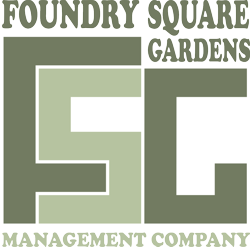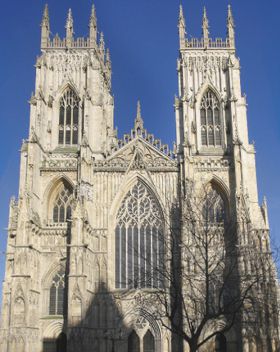
Foundry Square Gardens
Management Company
Foundry Square Gardens History
Foundry Square Gardens was completed, and its apartments offered for sale in Spring 2007. The four buildings contained in Foundry Square Gardens were given names associated with a business that previously occupied the same area of Dixons Yard.
John Walker House was named after John Walker, who owned the Iron Foundry that had been situated in Dixons Yard.
Gibson House was named after Thomas & Joseph Gibson to whom John Walker had been apprenticed.
Foundry House is self explanatory and The Gate House stands at the entrance to Foundry Square Gardens.
The history of John Walker and the Gibson family is well documented. The Walker Iron Foundry was founded in 1837 by John Walker of York ( he was born in 1801 and died 23 June 1853) In Trade Directories he was styled as ‘Iron & Brass Founder, Bell-Hanger & Smith at Dixon's Yard, Walmgate’.
John was the son of William and Elizabeth Walker, of the Aldwark-Hungate area, and he began a seven-year bound apprenticeship to Thomas & Joseph Gibson, Ironmongers, of Pavement, York on 25 March 1815.
Thomas Gibson died, and after completing his indentures, John Walker stayed with the firm. In 1824 he became a Freeman of York and by 1829 he had become Joseph Gibson's partner. He must have been a very industrious young man, since by November 1837 he had bought out the Gibson Foundry.
Beginning locally, supplying the first gas lamps and railings for St Leonards Place, York, the firm prospered, and in 1845/6 supplied the gates to Kew Gardens, London. This commission earned Walker the patronage of Queen Victoria and in 1847 he was granted permission to add "Iron Founders & Purveyors of Smithy Work to the Queen" to his letter heading.
In 1850–53 his firm supplied the gates and railings to the British Museum, London. John Walker's tender of £6,786 contrasted with 2 London foundries' tenders of £7,248 and £9,050. Considering the additional substantial costs of transport from Yorkshire, it seems likely that Walker astutely took the opportunity to acquire kudos before profit.
He also supplied the cast iron standard lamps in the British Museum forecourt, which were originally gas. According to a British History report, Walker achieved his success by submitting tenders far below those of his competitors. He supplied many large landowners with gates and railings, including Queen Victoria at Sandringham, Norfolk.
In 1843, following an accidental fire in 1840, Walker's supplied cast iron roof trusses for the South Nave of York Minster, which were erected by the York builder George Coates.
Keep in touch
- Ensure you are familiar with the fire procedure
- Why not register for Parking Club?
- Not sure about something - all the numbers you need are on our contacts page.
- Not sure about something - all the numbers you need are on our contacts page.






